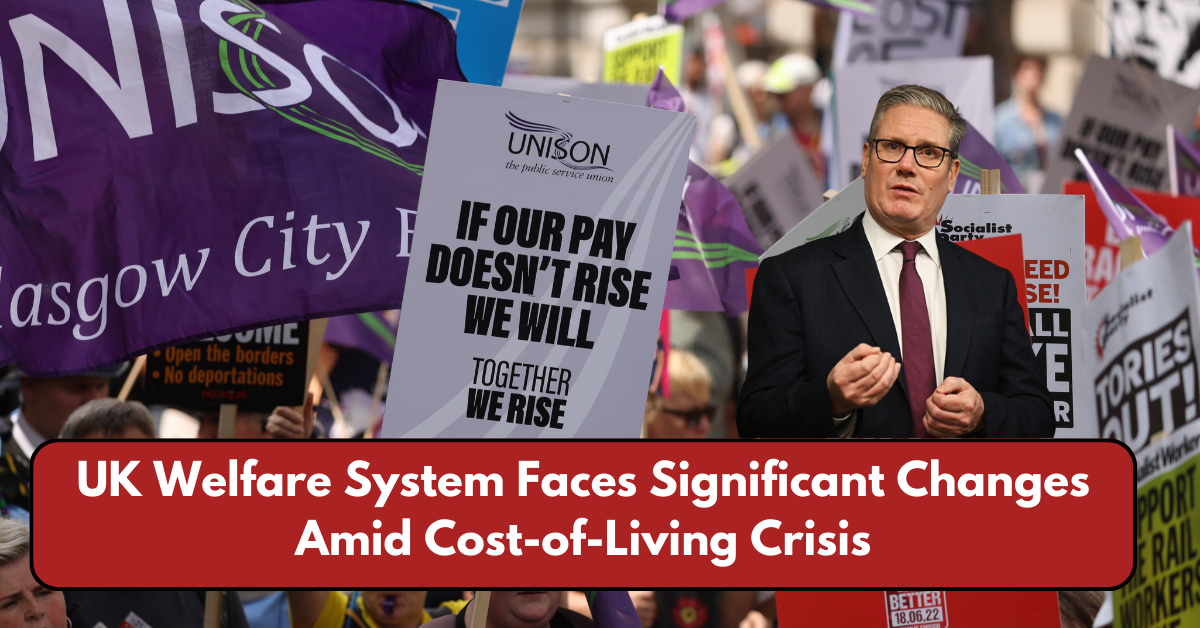The UK government is implementing significant reforms to its welfare system in response to the rising cost-of-living crisis and increasing welfare expenditures. These changes aim to reduce long-term dependency on benefits while encouraging employment among those capable of working. However, the proposed reforms have sparked debate, with critics warning of potential hardship for vulnerable groups.
Rising Costs and Welfare Dependency
The primary motivation behind the overhaul is the increasing cost of welfare payments, particularly sickness and incapacity benefits. According to government estimates, 3.3 million people currently receive incapacity benefits, costing the UK Treasury approximately £65 billion annually. If no action is taken, this figure is projected to rise to £100 billion by 2030. Notably, over 2.4 million recipients are granted the highest level of benefits without any requirement to seek employment (Government Welfare Expenditure).
Key Welfare Reforms
Stricter Work-Related Requirements
Under new proposals outlined by Work and Pensions Secretary Liz Kendall, long-term sickness benefit recipients will be encouraged to explore employment opportunities. The government aims to implement more rigorous assessments for claimants with mental health conditions, ensuring that those who can work are supported to do so.
Additionally, there is consideration of reintroducing in-person benefit assessments to replace the current system, which relies heavily on online and telephone-based evaluations. The government argues that face-to-face assessments will help prevent fraudulent claims and better assess individual capability [Department for Work and Pensions].
Digital Identity System to Combat Fraud

To address fraudulent claims and ensure accurate benefit distribution, the government is exploring the introduction of a nationwide digital ID system. This initiative would streamline identity verification for benefit applicants and reduce errors that lead to overpayments. Previous reports have highlighted billions lost annually due to fraud and administrative mistakes, putting further strain on public finances.
Back to Work Scheme and Incentives
As part of the Autumn Statement 2023, Chancellor Jeremy Hunt announced a £2.5 billion “Back to Work” plan, aimed at assisting individuals with disabilities, long-term health conditions, and the long-term unemployed in re-entering the workforce. Key aspects of this initiative include:
- Expanded Jobcentre support to provide tailored employment assistance.
- The “Chance to Work Guarantee”, which seeks to remove barriers preventing benefit claimants from working part-time while retaining necessary support.
- Increased collaboration between employers and the government to create job opportunities for those on long-term benefits [HM Treasury Autumn Statement].
Impact on Vulnerable Groups
While the government argues these reforms will promote self-sufficiency and reduce public spending, critics warn of potential consequences for vulnerable populations. Disability advocacy groups have expressed concerns that stricter work assessments could penalize individuals with legitimate mental health and physical disabilities.
Moreover, welfare reform studies have shown that previous benefit cuts and eligibility changes disproportionately affected low-income families and individuals with disabilities. Reports indicate that recent welfare policy shifts have resulted in significant financial losses for working-age families, while pensioners have benefited from relatively stable support levels [The Guardian Welfare Report].
Adjustments to Benefit Payments

To mitigate the impact of the cost-of-living crisis, the government announced a 6.7% increase in working-age benefits and an 8.5% increase in state pensions for 2024. These adjustments aim to help struggling households manage rising inflation and essential expenses.
The Ongoing Debate
The reforms have reignited debates about the balance between welfare support and financial sustainability. Proponents argue that reducing benefit dependency will ultimately create a stronger economy and a more self-reliant workforce. However, opponents fear that tightening eligibility rules and enforcing stricter work requirements will push some of the most vulnerable citizens further into hardship.
As the government moves forward with its welfare overhaul, all eyes will be on the impact of these policies on claimants, job markets, and public spending. Whether these changes lead to increased employment or unintended economic hardship remains to be seen.
This article has been carefully fact-checked by our editorial team to ensure accuracy and eliminate any misleading information. We are committed to maintaining the highest standards of integrity in our content.

Premlata is a seasoned finance writer with a keen eye for unraveling complex global financial systems. From government benefits to energy rebates and recruitment trends, she empowers readers with actionable insights and clarity. When she’s not crafting impactful articles, you can find her sharing her expertise on LinkedIn or connecting via email at [email protected].




